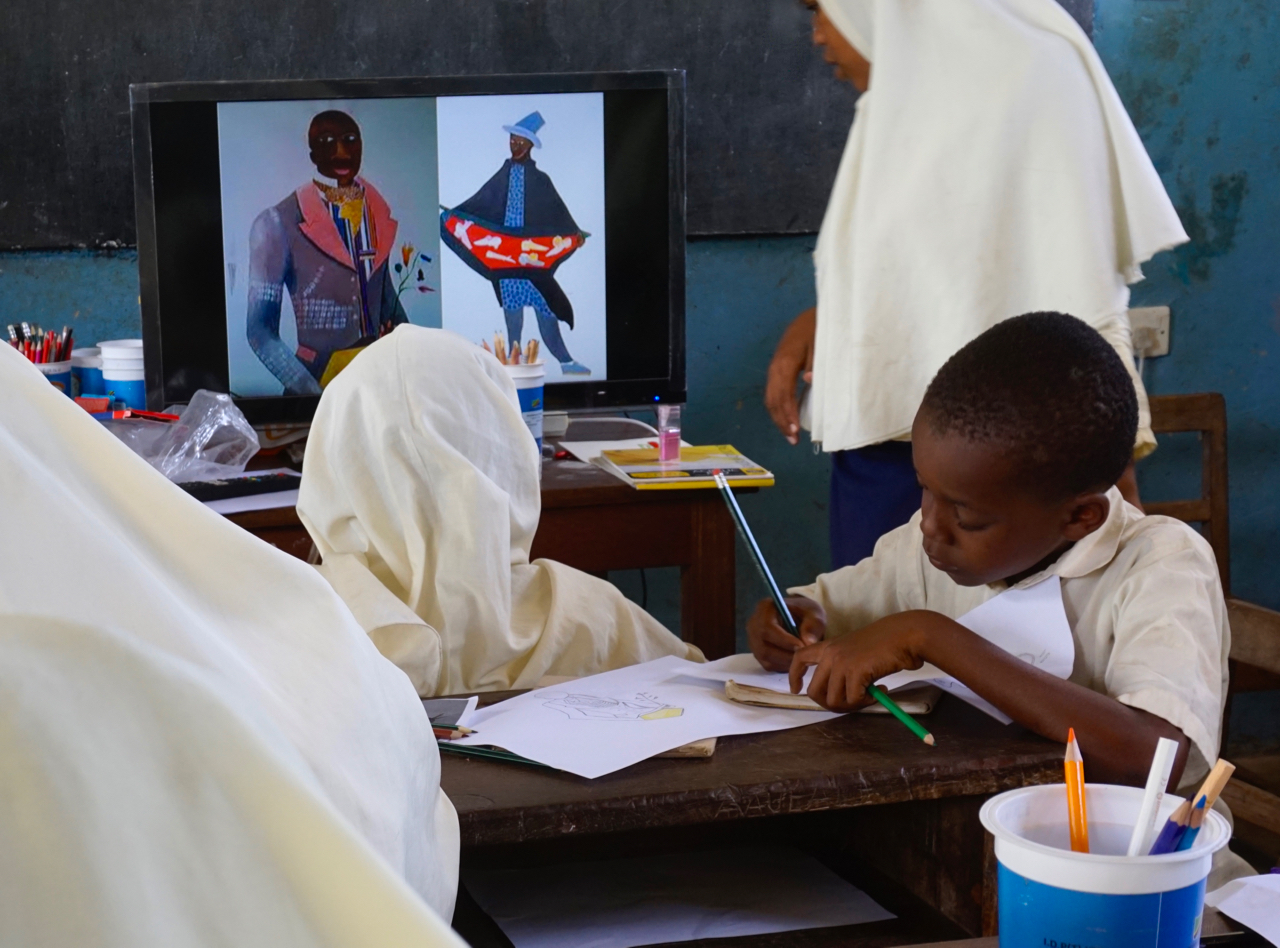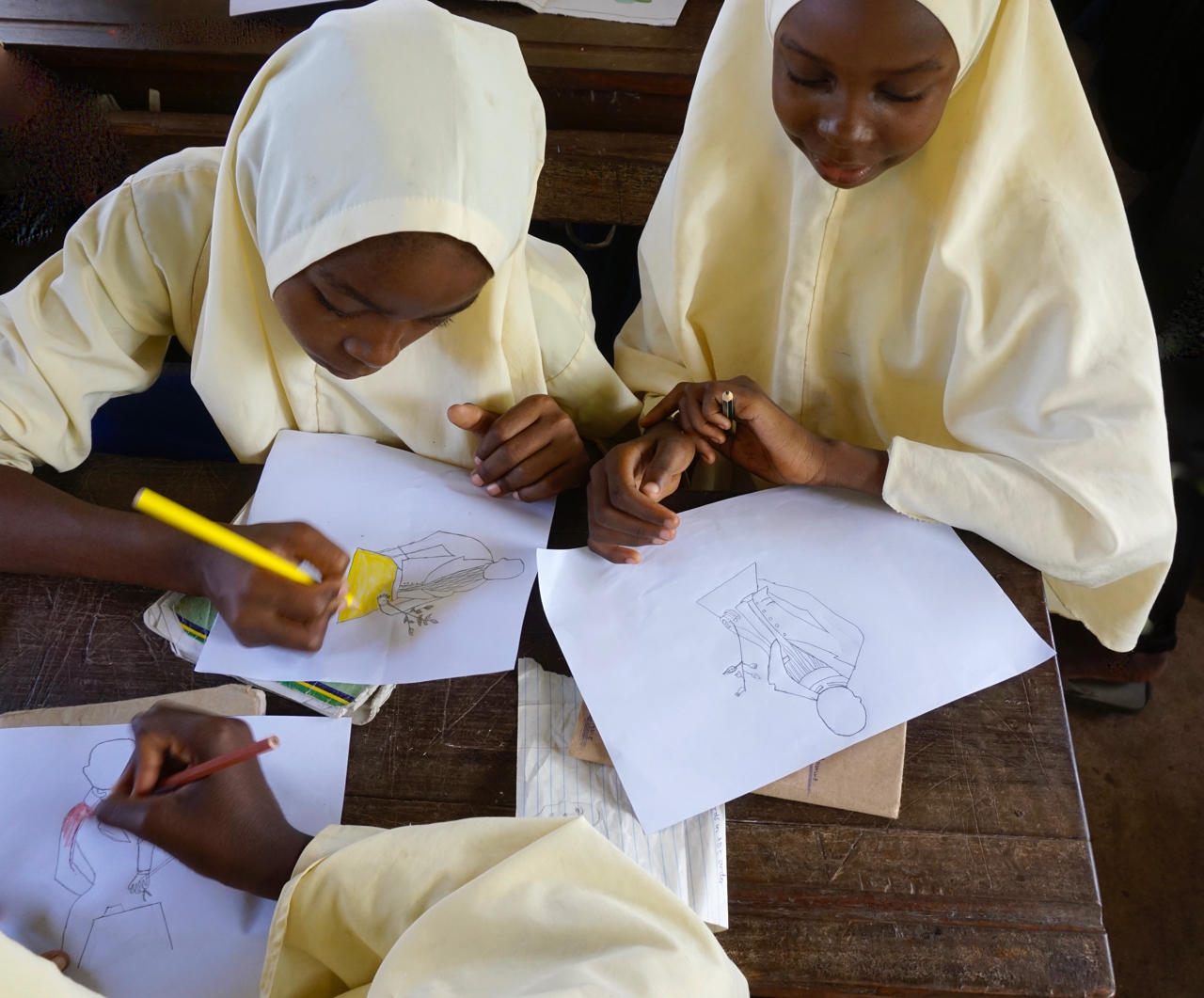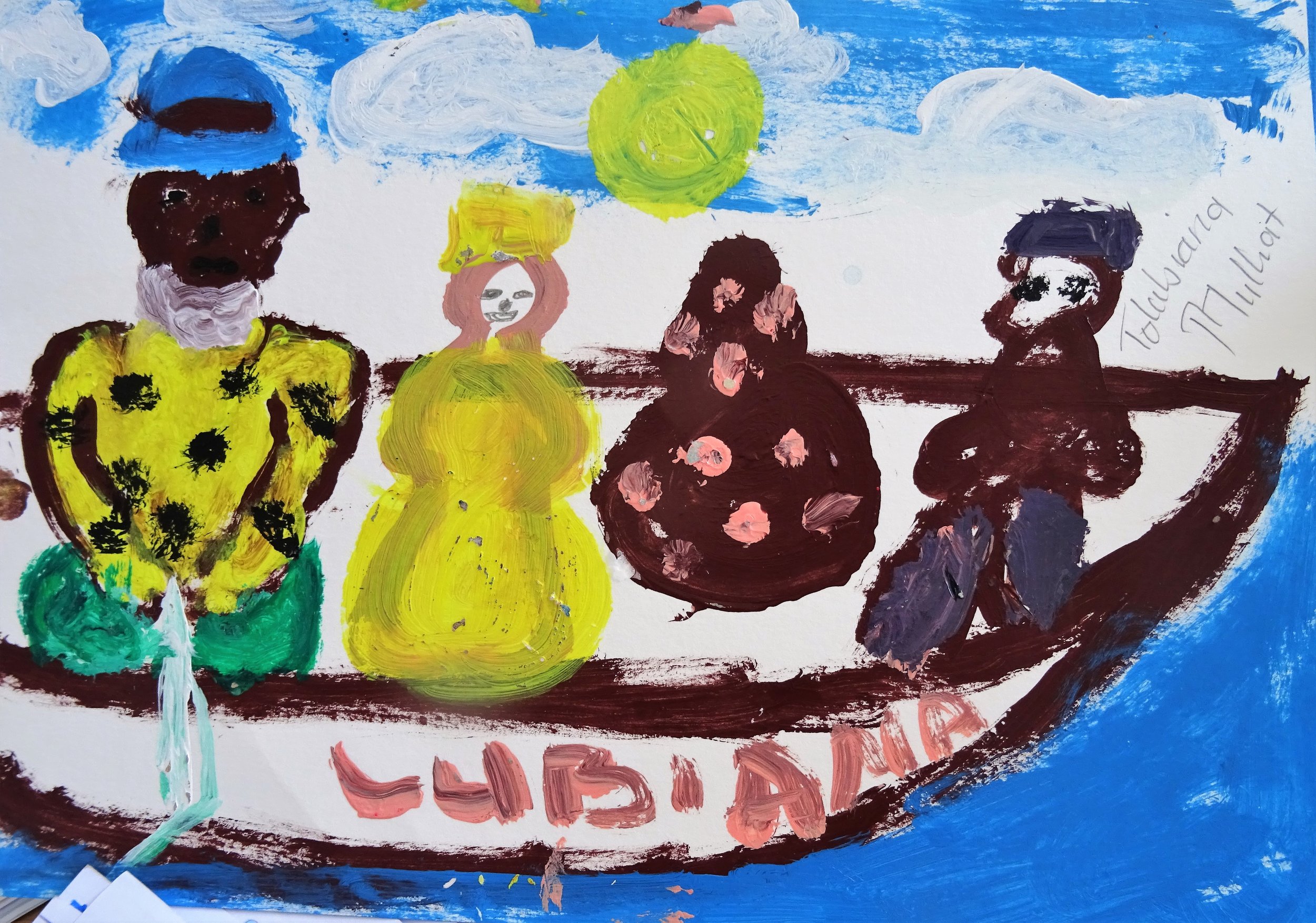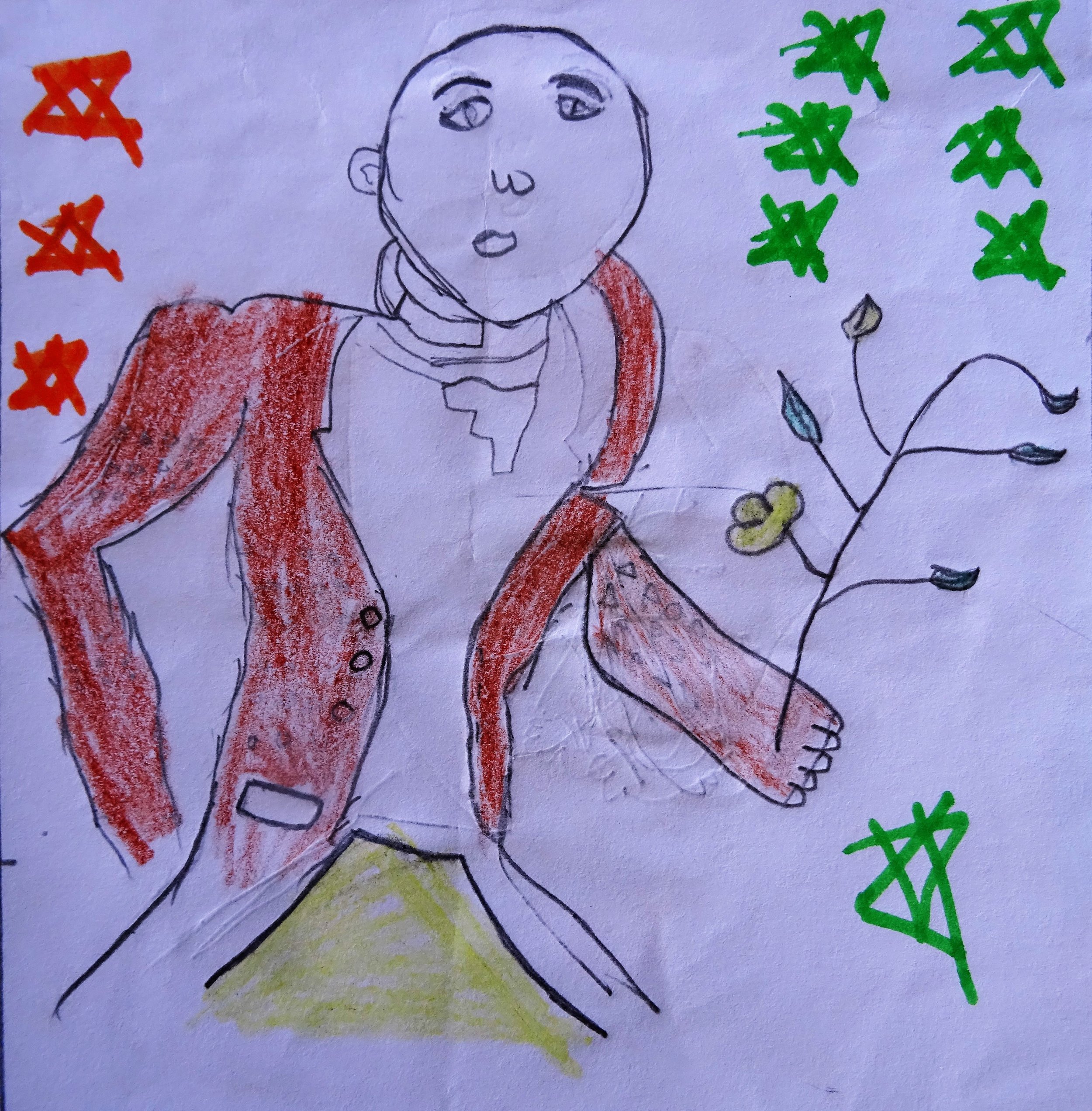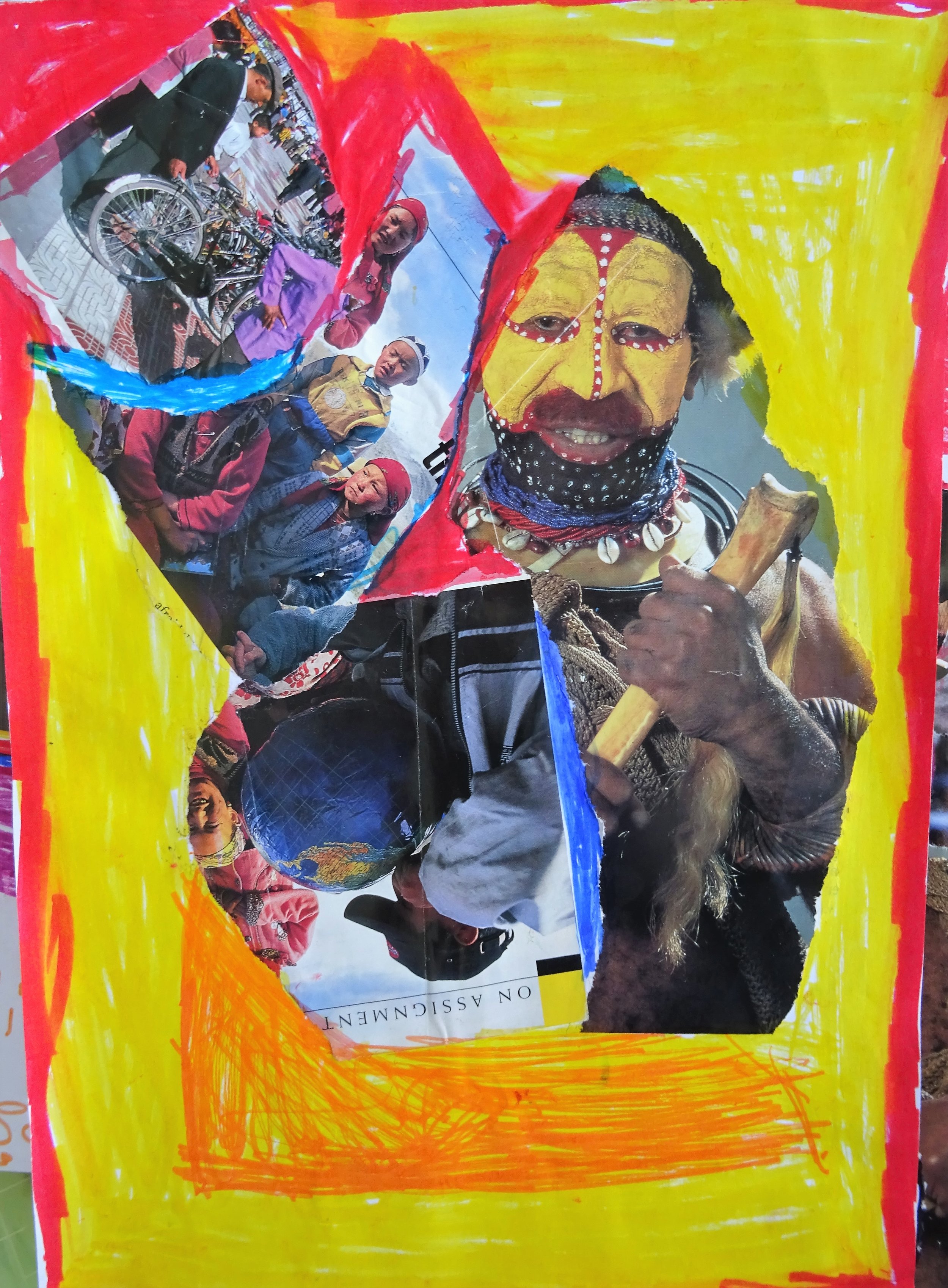Awareness eco-tourism is growing around the world and over the last 6 weeks we’ve learnt a lot about eco-friendly initiatives in Zanzibar. We shared our AirBnB with Maria Dimmler who’s putting together a website about eco-tourism in Zanzibar. She’s been visiting hotels and lodges to work out whether they can be featured on the website and which principles of ecotourism they meet – for example being involved in the community, employing local people, using sensitive building materials and disposing of waste responsibly. Maria has also reviewed other tourist services and products such as day-trip operators and small social enterprises which employ mostly women in making handicrafts, soaps and other items that are sold to tourists. We thought her research was inspiring and that the older students and teachers in Unguja Ukuu might also be interested in her work. The teachers are quite entrepreneurial – for example teacher Raiza gets students to make twig brushes and pays the school 300 Tanzanian shillings for the brooms which she sells for double the price to her neighbours.
So, on Thursday Maria joined us for the 45 minute drive to the village equipped with her laptop and photos of the small businesses she’s going to feature on the website. Caroline had prepared the students thoroughly with an appropriate vocabulary the previous day. With the help of Gasica (not exactly translating, but giving his own spin on Maria’s words), the students learnt about initiatives around the island. Next week Caroline is going to build on Maria’s presentation by talking about small business topics. Feedback from the students and teachers was positive, with much interest in the potential profits to be made in seaweed farming in particular!
Meanwhile I was keeping the youngest students entertained with prepositions and “Fun Maths”. The Rotary Club of Zanzibar, Stone Town, has kindly donated calculators and the students worked as groups to set each other maths problems and check the answers on the calculator. The introduction of this type of technology is very motivational and the students were encouraged to try more difficult multiplication and division sums.
The local teachers are busy preparing for the 120+ students who will join Safari English Club in March. They have met with the school committee and parents to talk about the principles of the club and the attendance and performance requirements. All the students sat a modified version of the Standard VI English exam that they will sit for real in November. Of course, the students haven’t done most of the syllabus yet. But even so, it was disappointing to see that 90 students scored less than 15 marks out of a possible 80 and there were four who scored 0. Even guessing the True/False answers you’d hope to score a couple of points. However, we are encouraged that there will be a class of 30 students who are have the potential to do well – some of them are already part of Safari English Club and a handful can already score nearly 50%. The student teacher was allocated the task of entering the names and the results of the mock exams onto an excel spreadsheet. Gasica says that the teachers have told him that they’re feeling very motivated about the process and now they know what they have to focus on.
Whether you’re at primary school or secondary school, the curriculum doesn’t include art and doesn’t encourage individual expression. As a result, art classes always generate a lot of excitement. For Monday’s class I had downloaded some information about Lubaina Himid, the Zanzibari-born artist who won the Turner Art Prize in 2017. One of the girls is called “Lubaina“ and one of the boys has the last name “Himid” and they were particularly happy to learn about her fame! The students were asked to “Look”, “Question” and “Wonder” Lubaina Himid’s work and then to decide what they would like to make themselves. A small group wanted to make collages, some chose to work with paint and others used coloured pencils or pens. The start of the practical session was a bit chaotic as students aren’t used to having a choice, but they all enjoyed the process and were very enthusiastic about the results that could be achieved by mixing paint with felt tip pen.
Photographs of the creative process taken by Richard Harris.





